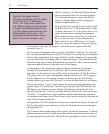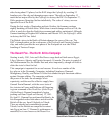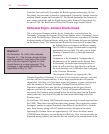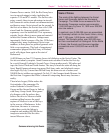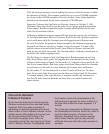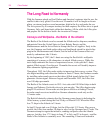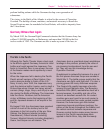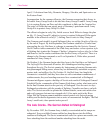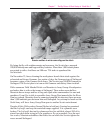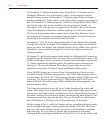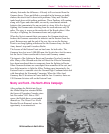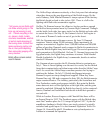
136
Close Combat
The Long Road to Normandy
With the Japanese attack on Pearl Harbor and America’s entrance into the war, the
conflict is now truly global. Over the next 30 months it will be fought on frozen
plains, on steamy jungle-covered mountains, high in the sky, and under the sea.
The Axis powers try to conquer territory for their empires; the Allies strive to push
Germany, Italy, and Japan back within their borders. All the while the Allies plan
and prepare for the decisive battle
the invasion of Europe.
Convoys and Wolfpacks
the Battle of the Atlantic
The Battle of the Atlantic revolves around the Allied need to ship men, machines,
and materiel from the United States to Great Britain, Russia, and the
Mediterranean
and the Axis efforts to disrupt the flow of supplies. Early in the
war, the Germans used both surface ships and land-based aircraft to attack ship-
ping in the Mediterranean and Atlantic, but the bulk of the German effort was
made by submarines
the U-boats.
By the beginning of 1942, the U-boats are using the Rudeltaktik
wolfpacks
consisting of as many as 40 submarines
to attack Allied convoys. While this
tactic helps minimize the losses of experienced crews, it also pits the U-boats
against Allied escorts. Over the next 18 months the escorts will steadily improve
their submarine fighting capabilities.
Throughout 1942, the Allies make strides in improving their convoy system. They
also begin installing radio direction finders to locate U-boats; the Germans counter
by installing radar search receivers that detect Allied signals before the U-boat
generates a return signal. Between August and December 1942, the Allies lose
over 100 ships per month.
The Battle of the Atlantic crests in 1943. Axis subs sink 100 Allied ships in both
January and February. Each side strives to gain an edge. The Allies begin equip-
ping B-24s with new 10-cm radar sets that prove effective at finding U-boats;
the radar search receivers installed on German submarines work only on the
1.5-meter radar.
The British Admiralty estimates that the Germans come closest to defeating the
Allied convoy system during the first 20 days of March 1943. When the Allies
lose 72 ships in the Atlantic to U-boats.
In April U-boats sink over 50 ships, but the Allies sink 15 U-boats. May proves
pivotal; the Allies lose another 50 ships to subs, but the Germans lose 41 subs. The
Germans attempt to regain the initiative, sending wolfpacks after the Atlantic
convoys, but they lose 17 U-boats in June, 37 in July, and 25 in August—and the
Battle of the Atlantic is essentially over. The remaining U-boats are ordered to



